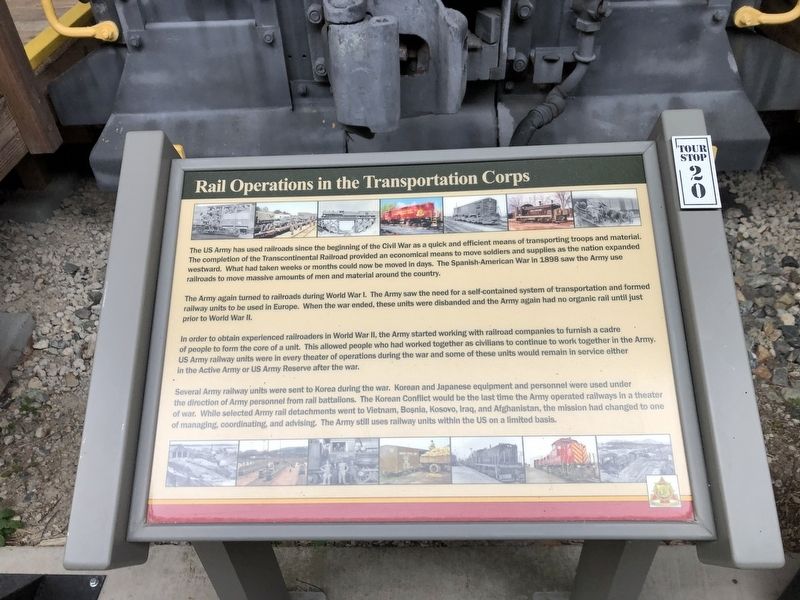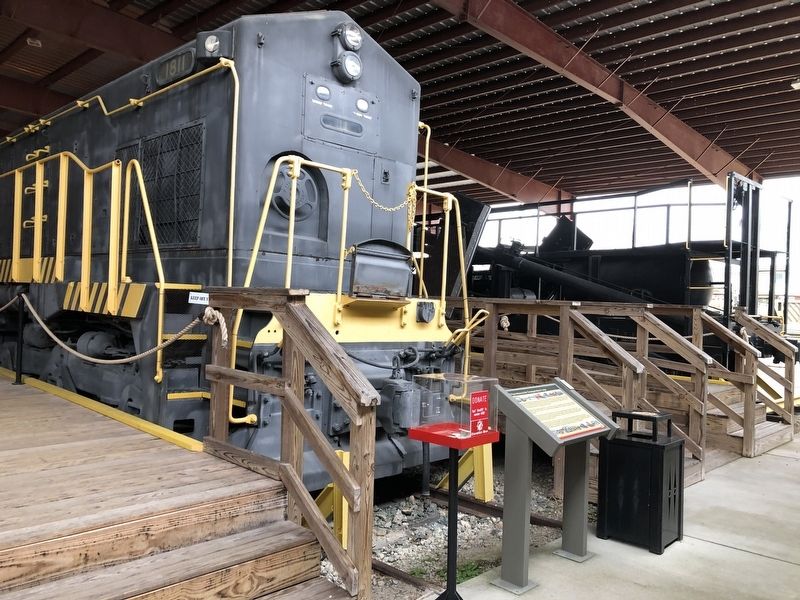Rail Operations in the Transportation Corps

The US Army has used railroads since the beginning of the Civil War as a quick and efficient means of transporting troops and material. The completion of the Transcontinental Railroad provided an economical means to move soldiers and supplies as the nation expanded westward. What had taken weeks or months could now be moved in days. The Spanish-American war in 1898 saw the Army use railroads to move massive amounts of men and material around the country.
The Army again turned to railroads during World War I. The Army saw the need for a self-contained system of transportation and formed railway units to be used in Europe. When the war ended, these units were disbanded and the Army again had no organic rail until just prior to World War II.
In order to obtain experienced railroaders in World War II, the Army started working with railroad companies to furnish a cadre of people to form the core of a unit. This allowed people who had worked together as civilians to continue to work together in the Army. US Army railway units were in every theater of operations during the war and some of these units would remain in service either in the Active Army or US Army Reserve after the war.
Several Army railway units were sent to Korea during the war. Korean and Japanese equipment and personnel were used under the direction of
Army personnel from rail battalions. The Korean Conflict would be the last time the Army operated railways in a theater of war. While selected Army rail detachments went to Vietnam, Bosnia, Kosovo, Iraq, and Afghanistan, the mission had changed to one of managing, coordinating, and advising. The Army still uses railway units within the US on a limited basis.Erected by US Army Transportation Museum. (Marker Number 20.)
Topics. This historical marker is listed in these topic lists: Military • Railroads & Streetcars. A significant historical year for this entry is 1898.
Location. 37° 9.981′ N, 76° 34.484′ W. Marker is in Newport News, Virginia. It is in Fort Eustis. Marker can be reached from Washington Boulevard just south of Madison Avenue, on the right when traveling north. Touch for map. Marker is at or near this postal address: 300 Washington Blvd, Fort Eustis VA 23604, United States of America. Touch for directions.
Other nearby markers. At least 8 other markers are within walking distance of this marker. 40-ton Railway Flatcar (here, next to this marker); Diesel-Electric Locomotive, RSD-1 (here, next to this marker); Steam Locomotive 2-8-0, (No. 607) & Tender (a few steps from this marker); Diesel-Electric Locomotive, MRS-1 (a few steps from this marker); Berlin Duty Train - Passenger Coach (a few steps from this marker); Landing Craft Vehicle Personnel (LCVP)

Credits. This page was last revised on February 1, 2023. It was originally submitted on February 27, 2021, by Devry Becker Jones of Washington, District of Columbia. This page has been viewed 101 times since then and 12 times this year. Photos: 1, 2. submitted on February 27, 2021, by Devry Becker Jones of Washington, District of Columbia.